Brief History of the VW Transporter (Kombi Bus)
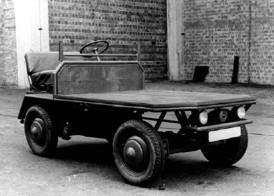

1949 Prototype "Plattenwagen" or "Flat Car"
First Generation Transporters (1950-1967)
After the War in 1944, the Wolfsburg factory needed to move supplies, parts and tools around the slowly rebuilding factory, so he engineered the first Plattenwagen ('flat-car'). It was a flatbed truck based on a beetle chassis, built from available VW parts. It had a ladder frame with Beetle axles, a front flat carry bed and an open cab above the rear VW flat-four engine. It proved a very useful addition to the factory, and soon there were dozens moving about the factory.
Improved versions were subsequently made to the same basic flat-bed design, but with more powerful VW engines and enclosed cabs with modern seats and headrests.
Utilising
parts from the Kubelwagon, Ben Pon came up with the idea of moving the cab forward and covering the flatbed over.
The first prototype for the now world famous VW camper was born and the Transporters went into production in November 1949.
During a press conference on 12 November 1949, Heinz Nordoff, chief executive of Volkswagen, presented the world with the first Volkswagen Transporter.
With it's engine in the rear and passengers placed up front over the axle, the payload was perfectly balanced between the axles.


Prototype Transporter
Initial tests on the new vehicle came to a halt. As the floorpan could not with stand the stress of the new bodywork. A new prototype was hastily built but with unitary construction. The body and chassis were welded together and strengthened with an additional subframe. Better brakes were added and the rounded shape of the front panel reduced fuel consumption.
Mechanically, the transporter was basically the same as the beetle up to 1970, sharing many sets of parts, which kept costs down. Below is an early panelvan with side opening doors for access to the huge loadspace.

The kombi was launched in May 1950, coming with side windows and removable seats. It was closely followed by the VW Micro Bus in June 1950 which boasted more creature comforts, better trim and many other passenger improvements - see pic below.

1950 VW Kombi
The Samba Microbus (below) was released in April 1951, designed to carry up to nine people
and had a full-length canvas sun roof.
VW Samba Microbus
The VW pickup truck was launched in 1952 and became very popular
in the construction industry. It was hardy and reliable, and simple to service and maintain (below).
The crew cab
model which was added to the range in 1958.

VW Pickup Truck
A late addition to the range, a High-roof van was launched in 1962 and proved to be popular with the rag trade as garment rails could be fitted in the load area. The side loading doors had to be enlarged to accommodate the higher roof line - see diagram and pic below.

VW High Roof Van

The top of the range Microbus had a full width dashboard
while all other models up to 1955 had a separate speedometer
behind the steering wheel. You can see the difference below.

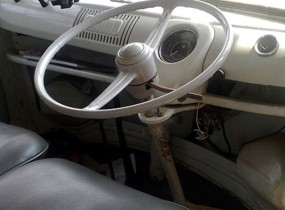
Known as Bay Window Transporters.
VW launched the successful Bay Window Transporter series in
August 1967.
A sliding side door and step were added to facilitate entry to the vehicle.
The air intakes were moved to the front panel,
the indicators were moved below the headlamps, the bumpers were strengthened
and the one piece windshield offered better forward and all-round vision - see pic below.
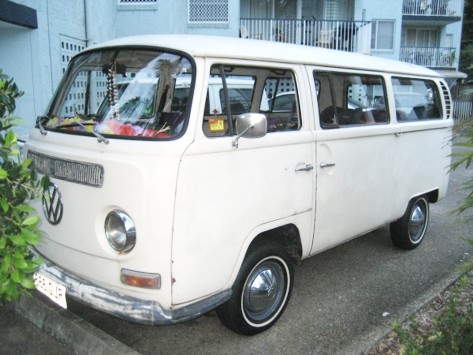
Bay Window Transporter
Designed with safety and comfort in mind, the Bay Window interior
and dashboard made more use of soft plastic and bigger, more comfortable seats - see pic below.

Bay Window Transporter Dashboard
VW Fleetline
In 1975 the VW Fleetline was released in South Africa as a budget alternative to the German models. It was only in production for a year and was manufactured in Brazil, comprised of parts from both older and newer versions of the transporter. Read more about the Fleetline.

 1975 VW Fleetline
1975 VW Fleetline
The End of an Era
The end of an era came when the classical rounded buses were phased out in 1979 and replaced with the newer, squarer Microbus shape (and Caravelle), the Third Generation Transporters.

Third Generation Transporter Caravelle
South and Central American Production
After production stopped in Germany, Mexico continued to produce buses from 1980 until 1990. They produced two commercials (panelvan and flatbed) and the family transporter combi.
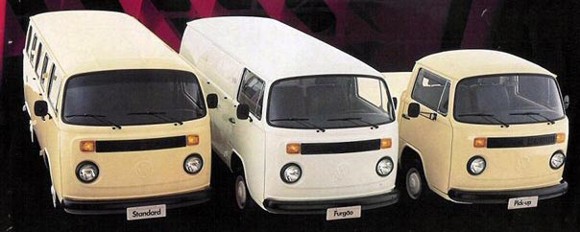 Mexico Range 1980 - 1990
Mexico Range 1980 - 1990
Volkswagen Brazil continued to manufacture the Transporter from 1991 until 2005. They produced the panel van and the family version with windows - see pics below.
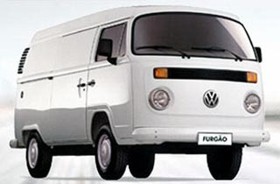

Brazil Transporter 1991 - 2005
Current Production
A UK company called Danbury Motorcaravans currently produces brand new VW Transporter Panelvans, Kombis and customised Camper Vans from their factory in Yate. See www.danburymotorcaravans.com


